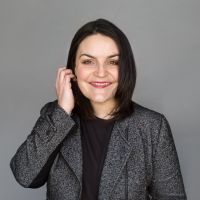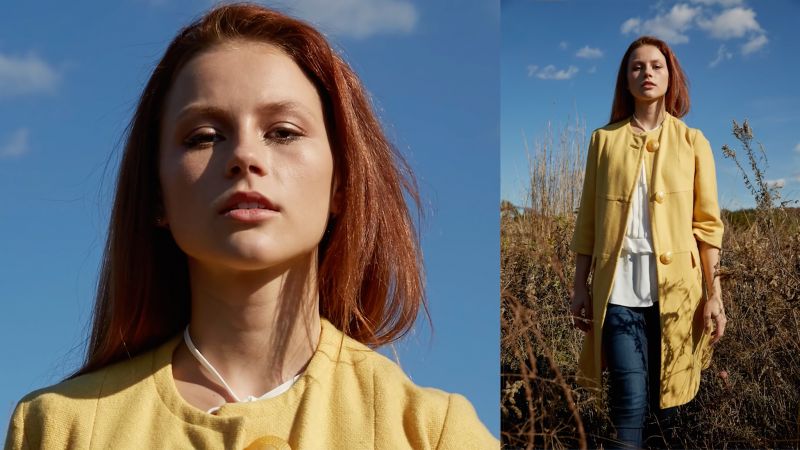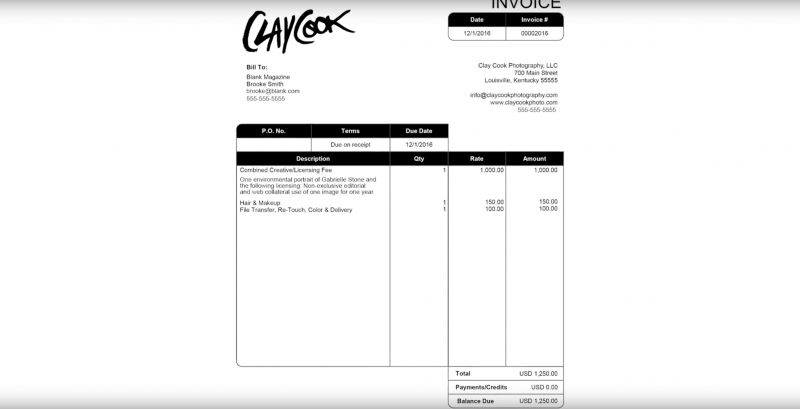
***This course is currently on sale for one week. Save $50 with code SPRINGFS
Foreword
Clay Cook has been steadily rising as a solid name in photography over the last few years, and with only a glimpse at his body of work, his client list, how he communicates and how prolific he is, it’s easy to see why. It’s that unambiguous natural extension of his self into his work that makes him so compelling as a photographer and as an educator – you always get the feeling from Clay that there’s something personal about the work, and him teaching it to you.
That Clay is very much a working photographer comes across clearly in this course because this isn’t just composed of a shot-list and gear list, but rather a much more complete overview of how to approach photography as a business should you want it to be yours. From the very start, a prevailing motif is that this feels different from much of what’s out there, and that Clay isn’t there simply to teach you a look, but to teach you how to work in this world, and succeed.
While his direct instruction on lighting and shooting is of its own intrinsic value (there’s loads of that – the specific minute details of set-building, how to easily emulate sunlight and all else), it is perhaps the rest that will turn out to be the most valuable. His advice on working with a team, on approaching and being approached by commercial and editorial clients, and pricing and social media strategy will help you think like someone who’s been doing this for a while even if you haven’t – and it’s not a crumb trail that leads simply to a blank space for your own conclusion, but rather direct advice with explanations. What this also is not is a collection of trite advice and basic tips, no. With what he teaches here it’s obvious Clay isn’t picking from the bottom, and enlightens the viewer to things you won’t find in a textbook. It’s easy to see why this course was Fstoppers’ most in demand.
– Kishore Sawh, Editor-in-Chief SLR Lounge
Overview
Fashion and Editorial Portrait Photography includes an introduction to Clay and an overview of the gear he uses with an explanation as to why. This gives those who haven’t followed Clay a clearer picture as to who he is, where he came from, and where he is going. Each lesson begins with Clay’s photoshoot, transitions to the editing portion with Jordan Hatley, and then finishes with Clay’s retouching and final touches.
The course begins with natural light and minimal gear, and the lessons are progressed throughout the tutorial by adding more gear and complex lighting setups. As with the photoshoots, the retouching begins with seemingly simple editing and steadily adds to the workflow. The course ends with Clay’s business advice as well as a final interview. Clocking in at a little over 11.5 hours, this video course can be downloaded for $299.
This Download Includes
- 11.5 Hours of Total Video Content (17.3 GB, 1080p 23.98fps h.264 mp4 files)
- Clay’s Entire Studio Gear Guide
- 18 On-Location Lessons with Studio Post-Processing
- Tethering and Building a Portable Workstation
- 6 Chapters on Business and Marketing
- 5 Sample Estimates and Invoices
- 19 RAW and JPEG Files from Each Shooting Lessons
- Access to Clay’s Private Facebook Group for Additional Private Mentoring
“Failure is the foundation to success.”
The Photoshoot
Fashion and Editorial Portrait Photography is designed for talent of all levels and begins with the novice portrait photographer in mind. The first lessons kick off in harsh natural light while Clay demonstrates his process of finding flattering Rembrandt style lighting by directing the model into position. The same procedure is followed as Clay demonstrates utilizing dappled light and working predominately in shade.
“I really like a nice cinematic style of lighting. Cinematic lighting always comes from directly overhead.”
After showing a very brief process of finding the light, the videos provide a few frames of Clay in action and interacting with the model for several shots until they have a decent image to showcase the lesson.
In the beginning, the photoshoots feel almost painfully short in comparison to the extensive basic retouching skills, but this isn’t a bad thing as it allows photographers of all levels to learn from the beginning or take in some new material. As the lessons continue to build on the foundational skills necessary for this type of dramatic work, Clay begins to really shine. His method of teaching is very thorough and easily consumed and internalized. Not to mention he just comes across as a very nice guy.
Clay then introduces artificial lights both outdoors and in a studio setting where he is clearly in his element. Clay brings in his creative team, which includes fashion stylist/creative director Gunnar Deatherage from Project Runway, as they discuss the look they are after. This is one of the brightest highlights in the entire course, and this is also where the lessons focus more on the actual photoshoot and less on the retouch.
The photography portion ends at Derby Field, the home of The Kentucky Derby, and Clay brings in his singer/songwriter friends for the day to show his approach of photographing an actual editorial.
Being able to see how the set was built and lit with explanations as to why are very beneficial. The biggest highlight is definitely witnessing Clay and Gunnar in action as they feed off of each other and direct the model in order to create a dramatic portrait with a fashion and editorial feel.
“Really pinch those brows. Just be pissed. I know you feel ridiculous but you look really good.”
View this post on InstagramA post shared by Clay Cook (@claycookphoto) on
The Retouch
The Retouch portion follows the same progression as the photoshoot. Jordan first shows how he uploads an image into Capture One by creating a new album, and then uploading the image to that album. This is great for anyone who is wanting to learn Capture One or is considering making the jump from LR but is afraid of the new environment. He then makes his global adjustments and exports the variant into Photoshop.
As with the photoshoot, the Retouch is for all levels and starts off with the beginner in mind. Because of that, it is tempting to want to fast forward directly to where Clay begins his color grading, however, Jordan is also an excellent educator and introduces a more advanced workflow as the lessons progress, and there’s no substitute for a strong foundation.
“Color grading is a creative process. It takes time and it is completely subjective, so remember to have patience when developing your style.”
Both Clay and Jordan show their methods of sharpening and extending pixels for shorter models by means of utilizing free transform in Photoshop, and much more. From minimal retouching to learning the fundamentals of frequency separation, it’s here, and offers unique insight into things we take for granted like ‘cropping’.
“I would say that is one of the biggest critiques that I always get out of other photographers is that I like crops, weird crops, I like strange crops, and I like crops that look like they’re in a magazine. And if you go through and you flip through a Vogue or a Vanity Fair or a W or a V, a lot of times the dimensions aren’t lined up with necessarily the aspect ratio of what the photographer captures so there’s a lot of strange crops. And so I like being tight as possible but not getting the full frame. So a little toe crop, a little head crop doesn’t really matter to me.”

A great thing about the education here in regard to retouching is that it’s a current school of thought, and arguably one more timeless, where it’s not about just porcelain immaculate skin. Eliminating the “perfection” that can be achieved in frequency separation and with plugins, the images maintain a level of authenticity.
“Remember it’s important to step away from this and come back to it at a later time because you might see the image in a whole new way.”
The Business Side
This is the other major highlight of the course and it’s over 2 hours worth. The information that Clay shares in regard to how he approaches commercial and editorial clients in regard to pricing and estimates is offered at workshops worldwide, often at a price point much higher than the course itself. He provides real examples of how clients contact him and his thought-process when responding. This information is gold.
Clay then touches on how he tackles social media, what has worked for him and why, and should help anyone understand the goals. Keep in mind that it most definitely isn’t a one-size-fits-all method to success, but the way he prices himself and the factors he takes into consideration can be adapted in any market. It isn’t limited to solely magazine clients either as the roots of his formula can be used when pricing a simple portrait shoot anywhere. Clay also explains why he does not put his prices on his website.
“I’ve actually gotten a lot of jobs by people asking ‘Hey, what’s your rate?’”
CONCLUSION
Fashion and Editorial Portrait Photography is a course for all levels of talent and is geared toward the serious portrait photographer. It is safe to say that a good chunk of it is fashion inspired portraiture, with actual fashion entering the realm at more than half way through the course. At 11.5 hours, it is definitely a time investment, but worthy of that time. And while the price point higher than a textbook , it’s far lower than a classic workshop, and also easier to pace and refer back to.
Whether you are a beginner or considered to be more advanced, there is information for everyone to learn. And while the pace seems a little slow to begin, there’s method to the madness and Clay, Jordan, and the team did a fantastic job of building on the basics and quickly bringing those new skills into the next lesson.
As an added bonus, there will be a private Facebook group just for those with this tutorial and you’ll be able to have access to Clay, to other likeminded people and get the answers to your questions, and get the creative juices going.
If you are looking to upgrade your skill-set in portraiture, fashion portraiture, fashion, studio work and on-location shooting, this is a solid investment of both your time and money, as it will pay dividends.
Fashion and Editorial Portrait Photography can be downloaded here.
This review was originally published in 2017
















Get Connected!